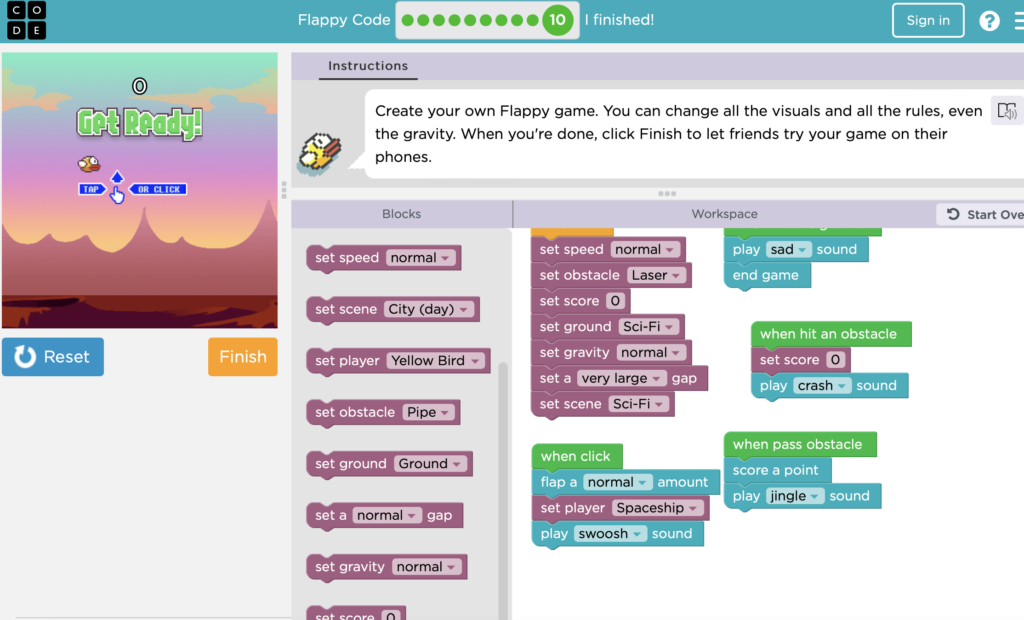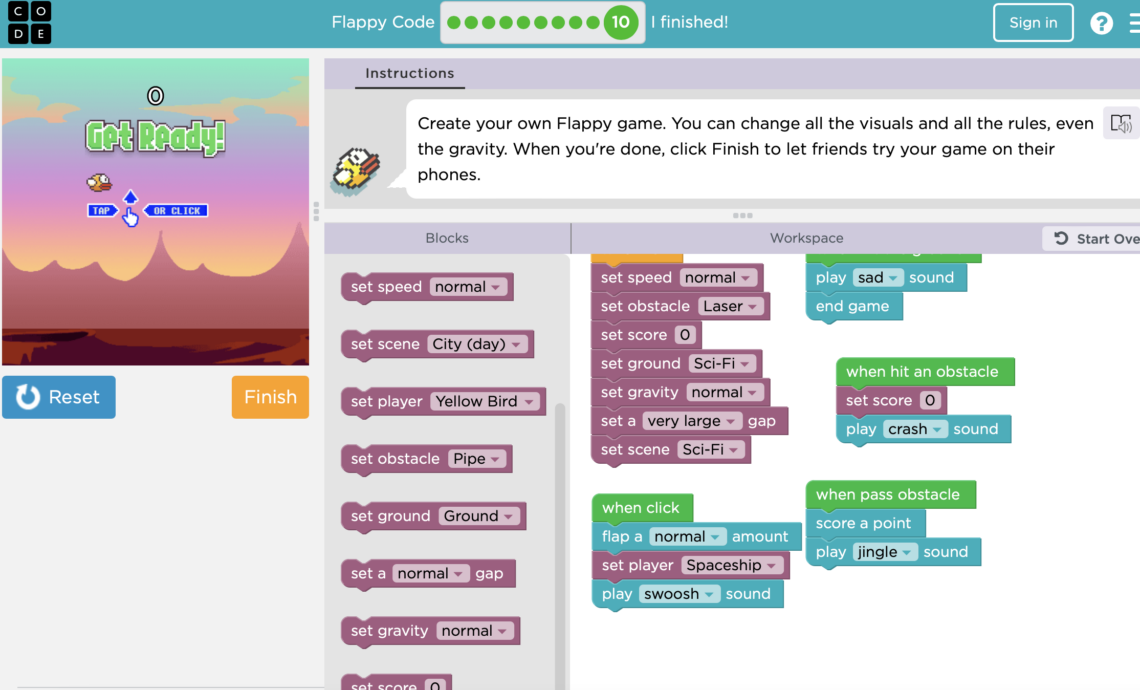Today in tech class I made a flappy Bird Game. I really enjoyed making this game and after I make this post I am going to try some other activities on Hour of Code Hands-on Activities or CS First – Hands-on Activities. Click below to play my flappy bird game.
https://studio.code.org/c/1882513068
Using iterative processes, computational thinking is a method for solving issues that entails breaking them down into smaller, more manageable pieces. It is an important skill that can help students improve their problem-solving abilities because it motivates them to tackle problems methodically and logically.

Although computation thinking is frequently connected to coding and math-related disciplines, there are many non-math opportunities to incorporate it into the curricula of various grade levels. Students could, for instance, develop algorithms for sorting and categorizing data in social studies, create interactive stories in language arts, or use computation thinking to analyze and understand data in science experiments.
Computational thinking and coding can be immensely beneficial for students in terms of translating abstract mathematical concepts into concrete forms. Students can modify and visualize mathematical ideas in real-time by working with code, which makes them more concrete and approachable. Through this method, students can gain a better grasp of mathematical ideas and increase their confidence in their capacity to solve challenging problems.
Overall, incorporating computational thinking and coding into the curricula for various grade levels can help students in a variety of ways, including by enhancing their ability to solve problems, develop critical thinking skills, and comprehend more complicated ideas.





